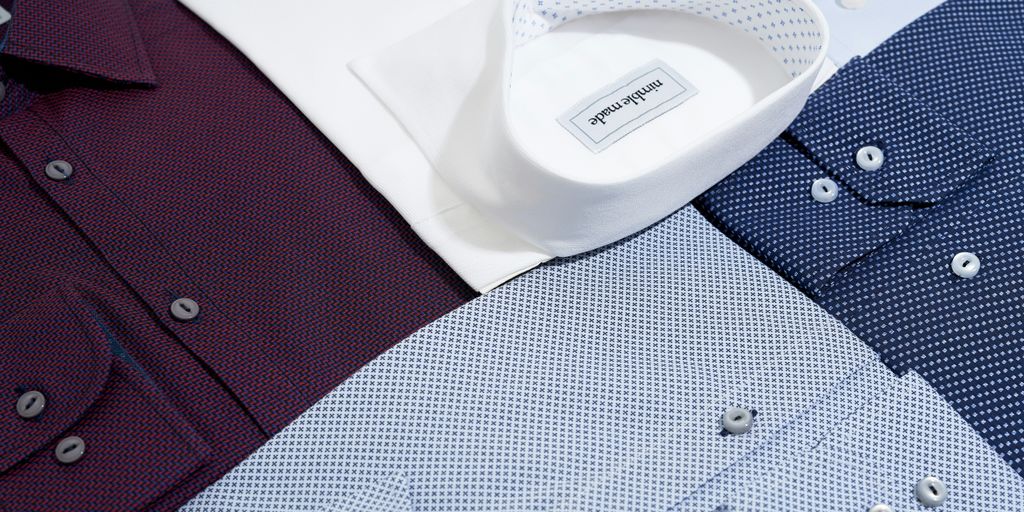
Dressing well for the office is more than just picking out clothes. It’s about finding a balance between looking professional and feeling comfortable. Whether your workplace has a strict dress code or allows for more casual attire, knowing how to dress appropriately can help you make a great impression. This guide will give you tips on how to dress both professionally and stylishly.
Key Takeaways
- Understand the dress code of your workplace to ensure you are dressed appropriately.
- Choose clothes that fit well and are comfortable to wear throughout the day.
- Invest in essential wardrobe pieces that can be mixed and matched for various looks.
- Use accessories like shoes, jewelry, and bags to enhance your professional appearance.
- Maintain your clothes by caring for them properly to keep them looking their best.
Understanding Workplace Dress Codes
Navigating the world of office attire starts with understanding the different dress codes. Each workplace has its own set of expectations, and knowing these can help you dress appropriately and confidently.
Decoding Business Formal
Business formal is the most polished and professional dress code. This dress code is often seen in industries such as finance, law, and corporate sectors where maintaining a polished and authoritative appearance is crucial. Men typically wear suits with ties, while women opt for tailored dresses or pantsuits. Always choose conservative colors and avoid flashy accessories.
Navigating Business Casual
Business casual is the most common dress code in American workplaces, and it can vary based on each workplace. Men typically wear dress pants or khaki pants with collared shirts, while women can choose from blouses, skirts, or dress pants. It’s less formal than business formal but still professional. Avoid jeans, shorts, and overly casual attire.
Casual Fridays: Do’s and Don’ts
Casual Fridays offer a break from the usual office attire, but it’s important not to go too casual. Acceptable options include neat jeans, casual blouses, and polo shirts. Avoid anything too revealing or sloppy. Remember, even on casual days, you should still look professional and put-together.
Dressing appropriately for your workplace not only shows respect for your company but also boosts your confidence and professionalism.
Choosing the Right Fit for Your Body Type
Tailoring Tips for a Perfect Fit
Tailoring is key to looking sharp and professional. A well-fitted suit or dress can make a world of difference. Here are some tips:
- Visit a tailor for adjustments.
- Ensure your clothes skim your figure without being too tight.
- Pay attention to shoulder seams and hem lengths.
A good fit enhances your confidence and makes you look polished.
Avoiding Common Fit Mistakes
Wearing clothes that are too big or too small can ruin your look. Avoid these common mistakes:
- Baggy pants and wide dresses that hide your shape.
- Tops that are too tight around the midsection.
- Sleeves that are too long or short.
Comfort vs. Style: Finding the Balance
Balancing comfort and style is crucial. You don’t have to sacrifice one for the other. Here’s how:
- Choose fabrics that breathe and allow movement.
- Opt for well-cushioned shoes that support your feet.
- Prioritize comfort in your daily office attire.
Comfort and style can go hand in hand, making you feel and look your best.
Building a Professional Wardrobe

Essential Pieces for Men
Building a professional wardrobe starts with key essentials. For men, this includes:
- A well-fitted suit in a neutral color like navy or gray.
- Crisp white and light blue dress shirts.
- A variety of ties to mix and match.
- Classic dress shoes in black or brown.
- A versatile blazer that can be dressed up or down.
Must-Have Items for Women
Women should focus on versatile pieces that can be mixed and matched. Key items include:
- A tailored blazer in a neutral color.
- A collection of well-fitted trousers in classic colors like black, gray, or navy.
- Dresses in classic silhouettes and neutral colors.
- High-quality blouses and shirts that flatter your body shape.
- A little black dress for various occasions.
Seasonal Wardrobe Adjustments
Adjusting your wardrobe for the seasons is crucial. In the summer, opt for lighter fabrics and colors. In the winter, layer with sweaters and coats. Layering tank tops and white long sleeve tees are essential for year-round versatility.
A well-curated wardrobe simplifies your morning routine and ensures you always look professional. Take the time to choose pieces that fit well and make you feel confident.
Accessorizing for a Professional Look

Choosing the Right Footwear
Your choice of footwear can make or break your outfit. Opt for shoes that are both comfortable and stylish. Pointed-toe flats or classic pumps are great choices. Avoid overly casual shoes like sneakers or flip-flops.
Minimalist Jewelry Tips
When it comes to jewelry, less is more. Choose elegant and understated pieces. A delicate necklace or a pair of pearl earrings can elevate your look without being too flashy. Remember, your jewelry should complement your outfit, not overpower it.
The Power of a Good Bag
A well-chosen handbag can complete your outfit and make a statement. Opt for a structured bag in a neutral color. Avoid oversized or slouchy bags that can give off a casual vibe. Instead, choose a bag that is sleek and sophisticated.
No outfit is complete without the right accessories! We’re sharing the best way to show off your style and add a finishing touch to your outfit.
Maintaining Your Professional Attire

Proper Garment Care
Always wear clothes that are clean and pressed. This shows you take your work seriously. If you travel often, opt for wrinkle-proof and stain-resistant fabrics like microfiber and blends.
Storing Your Clothes Correctly
Store your clothes in a cool, dry place. Use padded hangers for delicate items and fold knitwear to avoid stretching. Keep your wardrobe organized to easily find what you need.
Quick Fixes for Wardrobe Malfunctions
Keep a small emergency kit at work with safety pins, a needle and thread, and stain remover. This can save you from unexpected mishaps like a loose button or a small stain.
Taking care of your professional attire not only extends the life of your clothes but also ensures you always look your best at work.
Expressing Personal Style in a Professional Setting
Incorporating Trends Tastefully
Stay updated with fashion trends, but blend them subtly into your work attire. Opt for classic pieces with a modern twist, like a tailored blazer with unique buttons or a dress with a contemporary print. This approach allows for personal expression while keeping a professional appearance.
Balancing Personality and Professionalism
Your personal style is a form of self-expression. However, it’s crucial to balance it with professionalism. Choose outfits that reflect your personality but are still appropriate for the office. For example, if you love bold colors, incorporate them through accessories like ties, scarves, or jewelry.
Using Colors to Make a Statement
Colors can significantly impact how you’re perceived. Use them to your advantage by selecting shades that convey confidence and competence. For instance, navy blue and charcoal gray are excellent choices for exuding authority, while softer colors like pastels can make you appear approachable.
Embracing your personal style at work doesn’t mean compromising on professionalism. It’s about finding that sweet spot where your unique personality shines through while maintaining a polished and appropriate look.
Common Office Attire Mistakes to Avoid

Overdressing or Underdressing
Finding the right balance is key. Overdressing can make you seem out of touch, while underdressing might come off as unprofessional. Always aim for the middle ground.
Ignoring Company Culture
Every workplace has its own vibe. Ignoring it can lead to awkward situations. Pay attention to what your colleagues wear and follow suit.
Neglecting Grooming and Hygiene
No matter how stylish your outfit is, poor grooming can ruin your look. Keep your hair neat, nails trimmed, and ensure you smell fresh.
Remember, your attire speaks volumes about your professionalism. Avoid [common business casual mistakes](https://westwoodhart.com/blogs/westwood-hart/avoid-business-casual-mistakes-tips-men) and enhance your professional image by paying attention to these details.
Conclusion
Dressing professionally and stylishly for the office doesn’t have to be complicated. By understanding your workplace’s dress code, choosing clothes that fit well, and adding a touch of your personal style, you can create outfits that make you feel confident and look great. Remember, the key is to balance comfort with professionalism. Whether you’re dressing for a formal business meeting or a casual office day, the right attire can make a big difference in how you’re perceived. So, take these tips to heart, and you’ll be well on your way to mastering office attire.
Frequently Asked Questions
What is the difference between business formal and business casual?
Business formal means wearing suits, dress shirts, blouses, slacks, and skirts that are more conservative. Business casual is less strict and includes items like polo shirts, blouses, and khakis.
Can I wear jeans to the office?
It depends on your company’s dress code. Some offices allow jeans on Casual Fridays or as part of a business casual dress code, but they should be neat and not ripped.
How can I make sure my clothes fit well?
Get your clothes tailored to fit your body. Avoid clothes that are too tight or too loose. Well-fitted clothes make you look more professional and feel more comfortable.
What are some must-have items for a professional wardrobe?
For men, essential items include a well-fitted suit, dress shirts, and dress shoes. For women, a tailored blazer, pencil skirts, and versatile blouses are key pieces.
Is it okay to show my personal style at work?
Yes, you can show your personal style but keep it professional. Use accessories or colors to add a personal touch without going overboard.
How should I care for my professional clothes?
Follow the care instructions on the label. Regularly clean and press your clothes, and store them properly to keep them looking their best.





